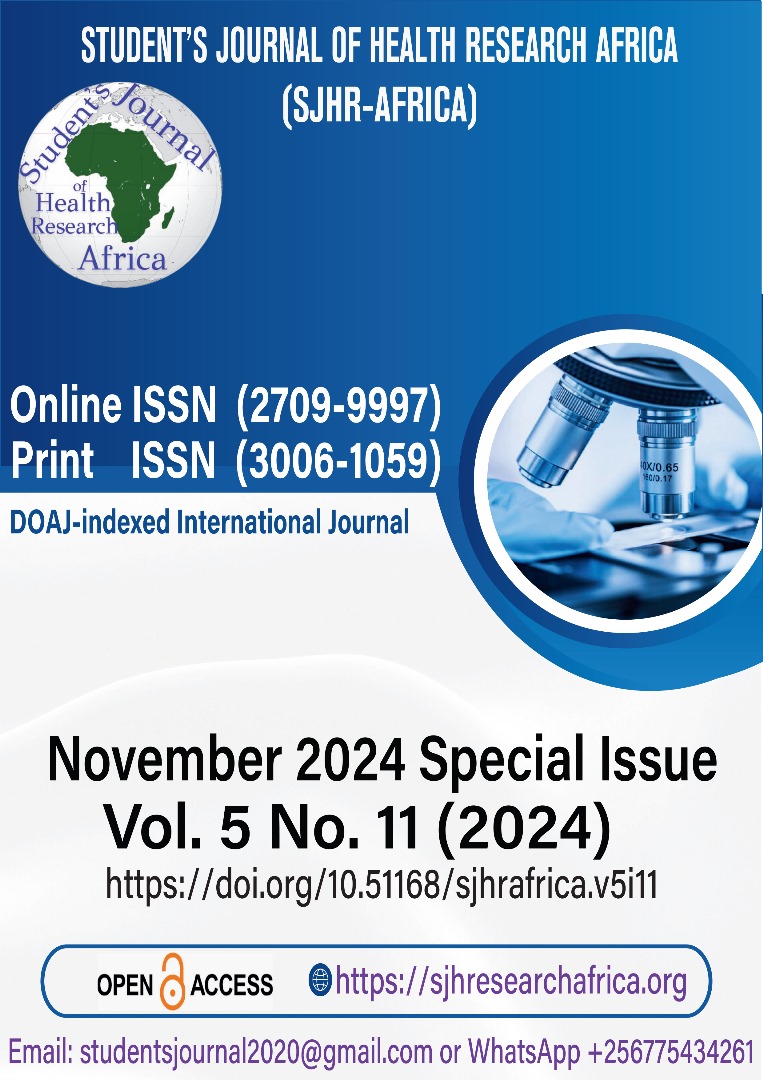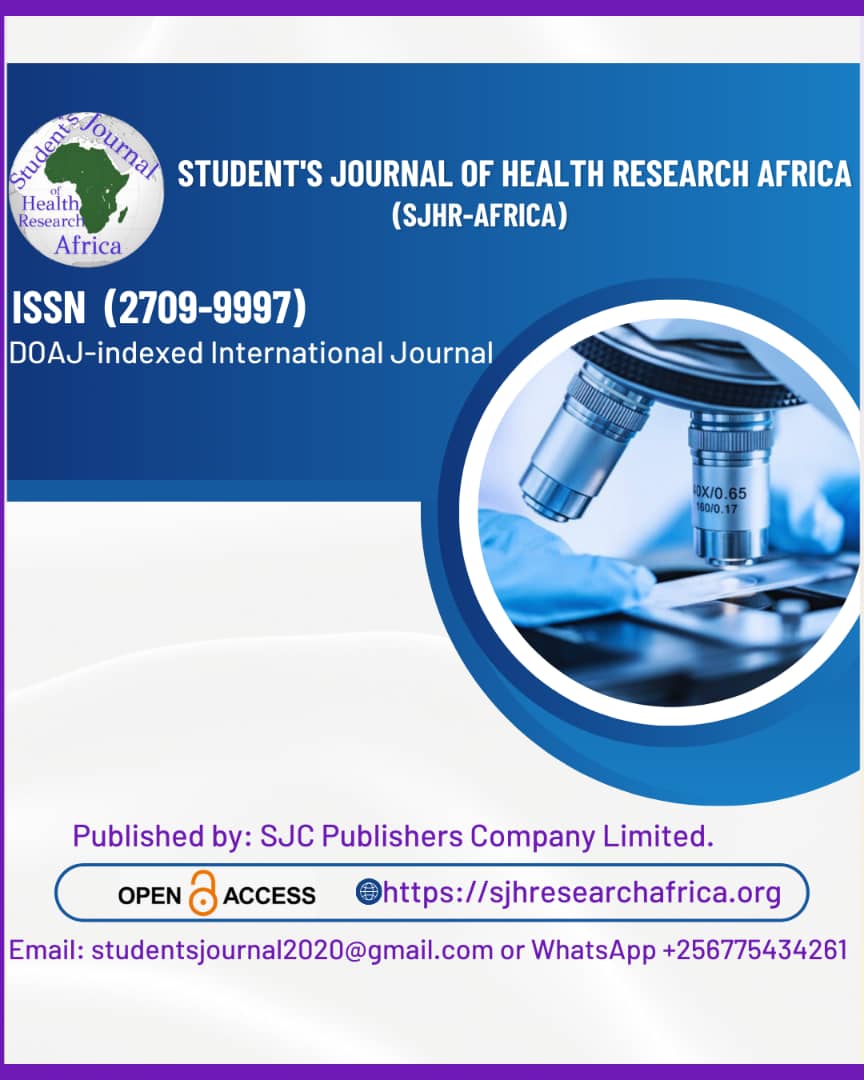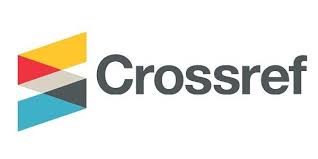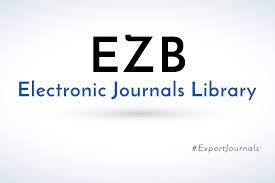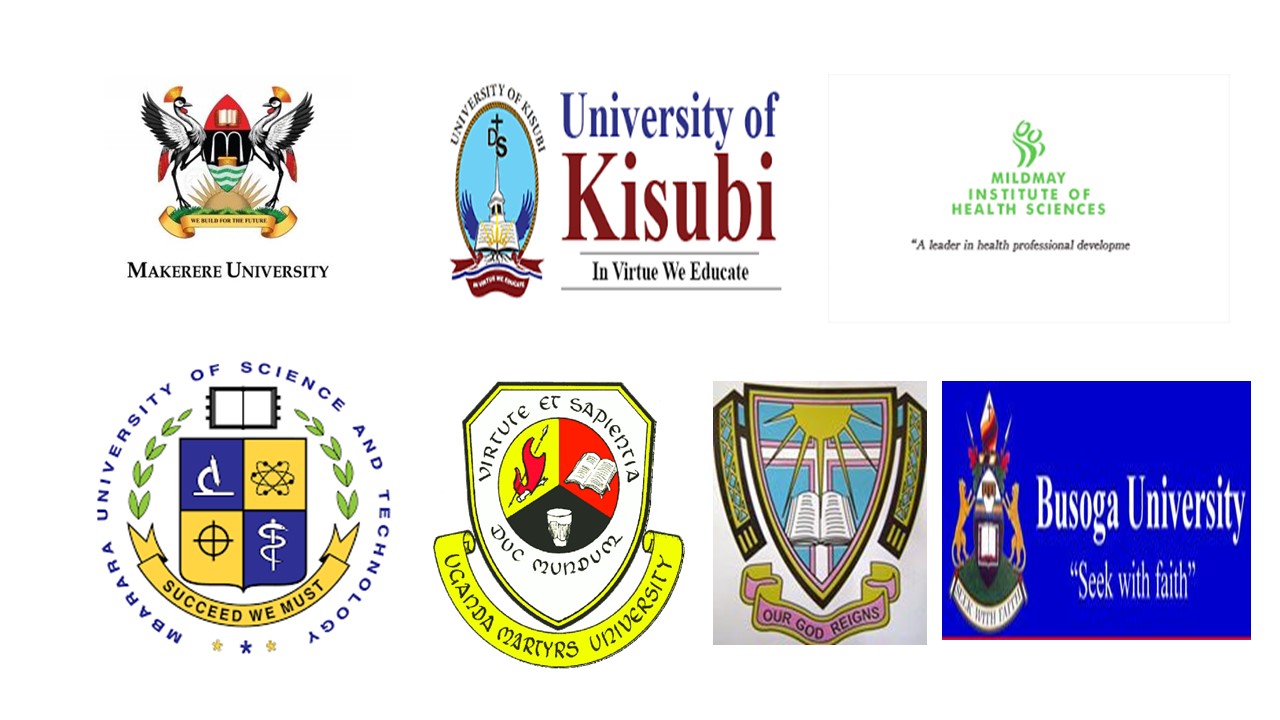A COMPARATIVE STUDY OF AUTOLOGOUS BLOOD VERSUS CONVENTIONAL CONJUNCTIVAL AUTOGRAFT SURGERY FOR PTERYGIUM
DOI:
https://doi.org/10.51168/sjhrafrica.v5i11.1745Keywords:
Pterygium, conjunctival autograft, autologous blood, suture fixation, recurrence, graft displacement, ocular surface surgeryAbstract
Background
Pterygium is a common ocular condition characterized by fibrovascular conjunctival tissue growth onto the cornea. Surgical excision and conjunctival autografting are the main treatments to reduce recurrence. The use of autologous blood (AB) as a graft adhesive has become more popular due to its cost-effectiveness, shorter surgical time, and elimination of extraneous materials.
Objective: To compare autologous blood graft fixation's efficacy, safety, and recurrence rates to conventional suture fixation in conjunctival autograft surgery for primary pterygium.
Methods
A 13-month prospective, comparative study was conducted at Jawahar Lal Nehru Medical College and Hospital in Bhagalpur. The 127 primary nasal pterygium patients were divided into two groups:
Group A (n=64): Autologous blood graft adhesion. Traditional 8-0 Vicryl suturing (Group B, n=63). All procedures were performed under local anesthesia by the same surgeon. After surgery, patients were monitored on days 1, 7, 30, 90, and 180. The parameters assessed included operation duration, postoperative pain, graft stability, complication rates, and recurrence (≥1 mm fibrovascular regrowth into the cornea).
Results
The average operating duration was significantly shorter in Group A (18.5 ± 3.2 minutes) compared to Group B (30.2 ± 4.1 minutes; p<0.001). Group A had significantly less postoperative pain and erythema in the first week. Graft displacement occurred in 4.6% of Group A and 0% in Group B (p<0.05). Three patients (4.6%) in Group A and two (3.1%) in Group B had recurrence at six months, which was not statistically significant (p>0.05).
Conclusion
Autologous blood is a safe, effective, and cost-effective alternative to sutures for fixing conjunctival autografts in primary pterygium. It significantly reduces surgery time and postoperative pain. Graft displacement is slightly more likely, but proper surgical technique can reduce it. Both procedures have similar recurrence rates, suggesting autologous blood is a viable alternative in high-volume, resource-constrained ophthalmology.
References
Alpay, A., Uğurbaş, S. H., & Erdogan, B. (2009). Comparison of sutureless and glue-free versus sutured limbal-conjunctival autografting in primary pterygium surgery. American Journal of Ophthalmology, 148(4), 543–547. https://doi.org/10.1016/j.ajo.2009.04.011
Anguria, P., Kitinya, J., Ntuli, S., & Carmichael, T. (2014). The pathogenesis of pterygium. Ocular Surface, 12(2), 112–119. https://doi.org/10.1016/j.jtos.2014.01.002
Cameron, M. E. (1965). Pterygium throughout the world. Springfield, IL: Charles C Thomas.
Clearfield, E., Hawkins, B. S., & Kuo, I. C. (2016). Conjunctival autograft for pterygium. Cochrane Database of Systematic Reviews, (2), CD011349. https://doi.org/10.1002/14651858.CD011349.pub2
Kenyon, K. R., Wagoner, M. D., & Hetherington, J. (1985). Conjunctival autograft transplantation for advanced and recurrent pterygium. Ophthalmology, 92(11), 1461–1470. https://doi.org/10.1016/S0161-6420(85)33826-4
Koranyi, G., Seregard, S., & Kopp, E. D. (2004). Cut and paste: a no suture, small incision approach to pterygium surgery. British Journal of Ophthalmology, 88(7), 911–914. https://doi.org/10.1136/bjo.2003.029496
Kurian, A. J., Reghunadhan, I., & Nair, K. G. (2015). Autologous blood versus fibrin glue for conjunctival autograft adherence in sutureless pterygium surgery: A comparative study. Middle East African Journal of Ophthalmology, 22(3), 356–360. https://doi.org/10.4103/0974-9233.159726
Martínez-de-la-Casa, J. M., Gracia-Ramos, M., & Sáenz-Francés, F. (2010). Conjunctival autograft fixed with autologous blood versus fibrin glue in pterygium surgery: Differences between primary and recurrent pterygia. Acta Ophthalmologica, 88(5), e99–e102. https://doi.org/10.1111/j.1755-3768.2009.01506.x
Moran, D. J., & Hollows, F. C. (1984). Pterygium and ultraviolet radiation: a positive correlation. British Journal of Ophthalmology, 68(5), 343–346. https://doi.org/10.1136/bjo.68.5.343
Nakamura, T., & Kinoshita, S. (2012). Recent advances in surgical treatment of pterygium. Cornea, 31(1), S46–S49. https://doi.org/10.1097/ICO.0b013e31824c384e
Pan, H. W., Zhong, J. X., & Jing, C. X. (2011). Different techniques for pterygium surgery: a meta-analysis. International Journal of Ophthalmology, 4(4), 403–411. https://doi.org/10.3980/j.issn.2222-3959.2011.04.02
Schetman, J., Lindstrom, R., & Lindquist, T. (1998). Fibrin glue fixation of conjunctival autografts in pterygium surgery. Ophthalmology, 105(10), 1903–1908.
Vasconcelos-Santos, D. V., de Souza, L. B., & Borges, J. H. (2012). Autologous blood versus fibrin glue in pterygium surgery. Clinical Ophthalmology, 6, 837–843.
Downloads
Published
How to Cite
Issue
Section
License
Copyright (c) 2024 Govind Kumar Mandal, Jagdish Choudhary, Pummy Roy

This work is licensed under a Creative Commons Attribution-NonCommercial-NoDerivatives 4.0 International License.

